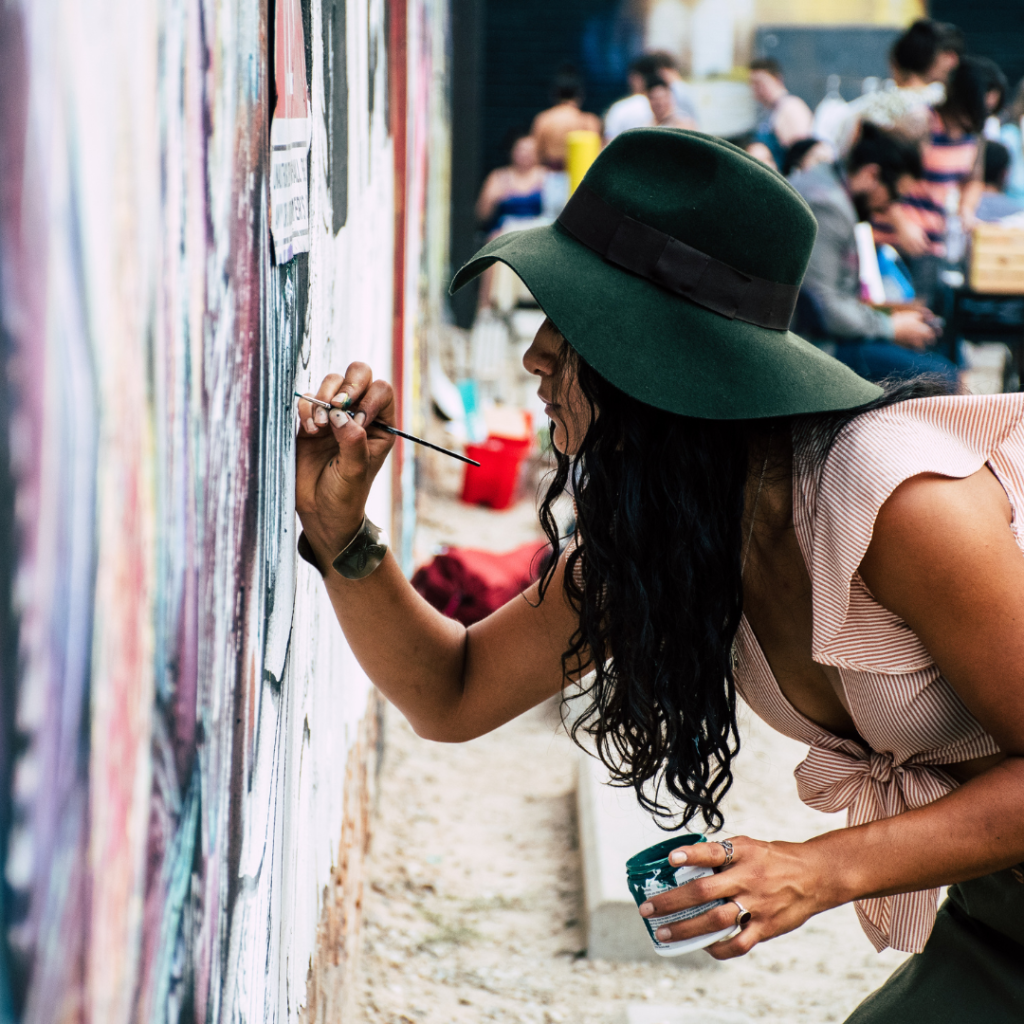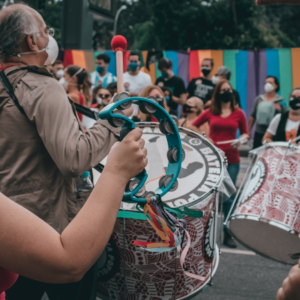Public art plays a vital role in shaping urban environments, transforming ordinary spaces into vibrant cultural hubs. It engages communities, provokes thought, and fosters a sense of belonging among residents. The presence of murals, sculptures, and installations can enhance the aesthetic appeal of a neighborhood while also serving as a platform for artists to express social and political messages.
Cities across the globe have embraced public art as a means to invigorate their landscapes and promote local culture. Through art, they create spaces that reflect the diversity and history of the community, encouraging interaction among residents and visitors alike. This phenomenon not only beautifies urban areas but also stimulates economic development by attracting tourism and local businesses.
As urban populations continue to grow, the importance of integrating public art into city planning becomes increasingly clear. Public art not only defines the identity of a place but also facilitates dialogue and connection among its inhabitants, making cities more inclusive and engaging. The ongoing conversation around the role of art in public spaces underscores its significance in the modern urban experience.
The Essence of Public Art in Urban Spaces
Public art significantly shapes urban environments, fostering a sense of community and enhancing the aesthetics of cityscapes. It can transform spaces and reflect cultural heritage, social issues, and local identities.
Defining Public Art and Urban Spaces
Public art encompasses a range of creative expressions, including sculptures, murals, and installations located in accessible urban areas. It serves to engage the public, stimulate conversation, and enrich shared spaces.
Urban spaces, on the other hand, refer to the physical environments within cities—parks, streets, and plazas—which provide a backdrop for these artworks. Together, they create a dialogue that reflects and shapes the cultural identity of communities.
Assessing the Impact of Public Art on Urban Landscapes
The presence of public art can significantly influence the aesthetic appeal of urban landscapes. It enriches the visual experience and can make areas more inviting. Murals can rejuvenate dull walls, while sculptures serve as focal points in public parks.
Moreover, public art contributes to urban regeneration by attracting visitors and stimulating economic development. Studies show that neighborhoods with prominent art installations often see improved quality of life and increased civic ownership. This impact extends to enhanced social engagement, where residents feel a sense of pride in their spaces due to vibrant artistic contributions.
Public Art as a Cultural and Social Catalyst
Public art often acts as a catalyst for social justice initiatives and community dialogue. Through their themes and narratives, artworks can address pressing societal issues and reflect diverse cultural identities.
Art installations serve not only to beautify spaces but also to foster discussions about sustainability, inclusion, and cultural heritage. Cities that invest in public art initiatives often see improved community identity and engagement, affirming the role of art in shaping societies and enhancing urban environments.
Interaction and Accessibility in Public Art
Public art plays a crucial role in enhancing urban spaces by inviting participation and fostering inclusivity. Well-designed public artworks engage communities and make art accessible to a broader audience.
Fostering Community Engagement Through Accessible Art
Accessible art is key to fostering community engagement. It encourages residents to interact with their surroundings, creating a sense of ownership in public spaces.
Interactive installations, such as murals that allow for public contribution or sculptures that can be touched, invite people to explore their creativity.
Design elements to consider:
- Visibility: Art should be sited in high-traffic areas.
- Engagement opportunities: Incorporate spaces for community input.
Integrating Technology: AR and VR in Public Spaces
Augmented Reality (AR) and Virtual Reality (VR) have transformed the landscape of public art. These technologies create immersive experiences that enhance viewer interaction.
AR applications can overlay digital art onto physical spaces, allowing users to engage with their environment in new ways. This creates an opportunity for storytelling and shared experiences that resonate with diverse audiences.
Benefits of technology in public art include:
- Increased accessibility: Offsetting barriers for mobility and comprehension.
- Enhanced social interaction: Connecting individuals through shared experiences.
Art for All: Inclusivity and Dialogue in Public Spaces
Inclusivity in public art ensures that everyone has access to art-making experiences. This approach fosters dialogue among diverse groups, enriching community ties.
Interactive artworks that reflect the area’s cultural identity encourage participation from various demographics. Workshops and events that invite community members to contribute to installations support a democratic art-making process.
Key aspects of inclusivity:
- Accessibility measures: Ensure installations can be enjoyed by people with disabilities.
- Cultural representation: Engage local artists to represent different narratives and experiences.
The Societal Role of Urban Public Art
Urban public art plays a significant role in shaping how communities express their identity and address societal challenges. By integrating art into public spaces, cities can foster a sense of belonging, reflect cultural heritage, and engage with pressing issues, such as social justice and climate change.
Enhancing Urban Identity and Heritage
Public art contributes to the unique character of urban spaces by reflecting their history and cultural identity. Murals, sculptures, and installations often celebrate local traditions and prominent figures, creating layers of meaning within the urban landscape.
This art serves as a visual narrative, communicating the community’s values and experiences. For example, historic neighborhoods often integrate art that honors their past, enhancing pride among residents. Additionally, public art can encourage cultural exchange by inviting diverse perspectives that enrich the urban environment.
Artistic Responses to Social Issues and Climate Change
Many artists use public spaces to spotlight social justice and environmental concerns. Artworks addressing issues like inequality or climate change provoke thought and dialogue, urging viewers to consider their roles in these challenges.
Collaborative projects often emerge, uniting artists, activists, and community members. This collective engagement can result in impactful art that resonates with a wider audience. For instance, murals may illustrate the effects of rising sea levels or advocate for social equity, fostering awareness and action.
Public Art as an Economic and Social Driver
The installation of public art often stimulates local economies by attracting tourism and supporting local businesses. When cities invest in art, they can increase foot traffic, which benefits shops and restaurants nearby.
Moreover, public art initiatives create jobs, both for artists and workers involved in installation and maintenance. Alongside economic benefits, these projects enhance community cohesion by providing spaces for social interaction, workshops, and events that unite diverse groups. Art becomes a tool for not just beautification but also social connectivity and economic vitality.
Case Studies in Urban Public Art
Public art significantly impacts urban environments through iconic installations and community-focused projects. It fosters placemaking and enhances the aesthetic of urban architecture, attracting both locals and tourists alike.
Iconic Works: From Cloud Gate to Charging Bull
Cloud Gate, known as “The Bean,” is a modern sculpture located in Chicago’s Millennium Park. Designed by Anish Kapoor, its reflective surface creates a unique interplay with the surrounding skyline. The sculpture draws millions of visitors annually, contributing to the city’s tourism.
In New York City, the Charging Bull stands as a symbol of financial optimism. Created by Arturo Di Modica, this bronze statue gained fame for its pose and placement near Wall Street. Both Cloud Gate and the Charging Bull exemplify how public art can become integral to the identity of their urban spaces.
Community Projects: Wynwood Walls and Little Sun
Wynwood Walls in Miami showcases street art on a grand scale. This initiative transformed a neglected industrial area into an outdoor gallery, featuring works from renowned artists. It promotes community engagement and revitalizes the neighborhood, exemplifying successful urban design.
Little Sun, created by Olafur Eliasson, combines art with sustainable energy. These solar-powered lamps have been distributed in underserved areas, linking public art to social impact. Such community-focused projects demonstrate the potential of art to enhance local identity and foster connections among residents.
Global Perspectives: The Gates and Other Landmarks
The Gates, a temporary installation in Central Park, was designed by Christo and Jeanne-Claude. This project featured 7,503 saffron-colored gates lining park pathways. It transformed the landscape and attracted considerable media attention, highlighting the importance of context in public art.
Other global examples include earthworks and sound projections that engage viewers in innovative ways. These installations encourage interaction and reflection, illustrating how public art can serve as a platform for cultural expression. Each landmark provides insight into how art can redefine urban spaces and foster community dialogue.





